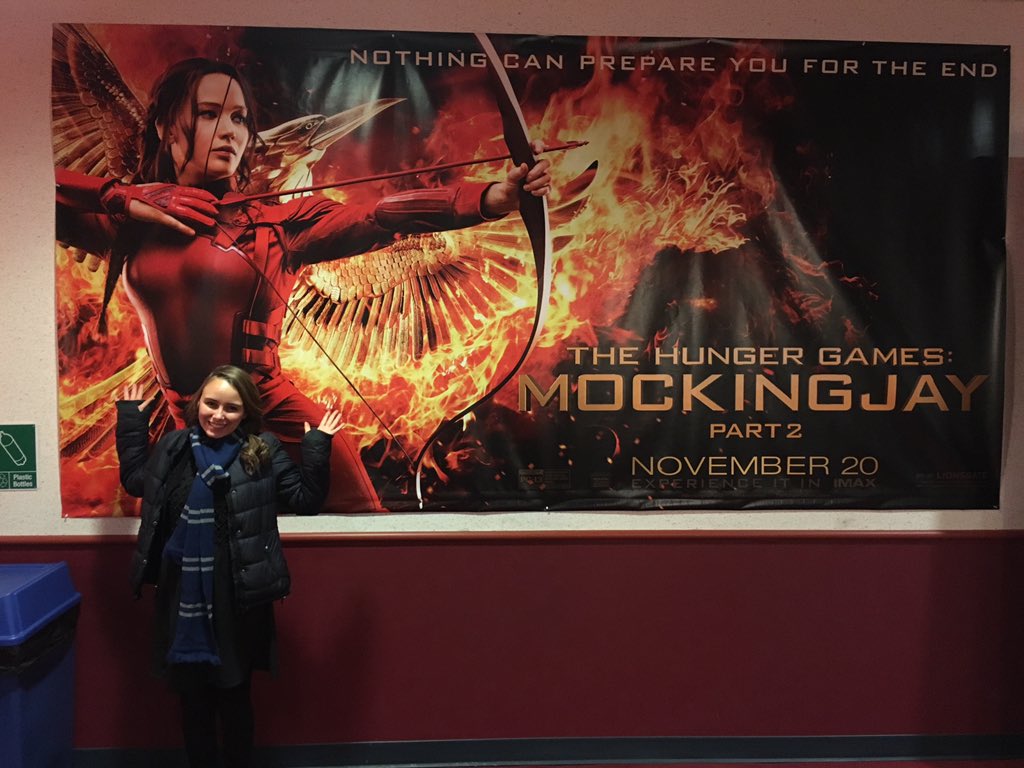
(Please note: This review is written in such a manner as to not spoil the film for those who have yet to see it and/or who are yet to read the book.)
The Hunger Games: Mockingjay – Part 2 marks the conclusion to box office sensation and critically acclaimed series The Hunger Games. As the title suggests, the film follows the second half of Suzanne Collins’s young adult dystopian novel Mockingjay. It does this in a manner which remains largely faithful to the source material, with brilliant acting by its all-star cast and amazing production value, from the sets to the costumes to the special effects.
However, despite the more intense and action-heavy material of this second half of the Mockingjay story, Part 2 continues to suffer of the same shoddy pacing and occasionally overdramatic writing that led to Part 1’s decline from the earlier installments in the series.
I wanted to like Mockingjay – Part 2 more than I did. As a huge fan of the Hunger Games franchise, I had high hopes for the Mockingjay films, especially after the roaring success of the second film in the series, Catching Fire (which doubles as one of my favorite movies of all time). However—perhaps because of how much I wanted to love this movie—I walked out of the theater Thursday night feeling like I’d been cheated. Not a lot, but a little.
This stems from the way director Francis Lawrence—who has helmed the franchise from the second installment onward—handles the pacing in Mockingjay. The novel itself struggles to find a good rhythm as the trilogy transitions from its traditional setup of pre-Hunger Games build-up, to Hunger Games intensity, to post-Hunger Games fallout. Now, the country of Panem is at war, which is a different game entirely. But rather than fixing the pacing as the filmmakers claimed to hope they would when they announced they would be splitting the third book into two movies (as all good YA book-to-film franchises should be, clearly), they’ve exacerbated these issues. Pivotal scenes in Part 2 move too quickly for the audience to keep up with what’s going on, let alone feel their full impact; scenes between action sequences drag, drawing attention to the film’s bloated two hour and seventeen minute runtime.
This becomes most evident in the scene that finds itself at the heart of Mockingjay’s climax. I don’t want to spoil you if you don’t know how Mockingjay ends, but essentially this scene is the one that makes the series. It’s what Katniss’s journey has been building to from the beginning, the scene that ultimately drives the lessons of the series home. It is the scene on which, more than any others in the entire series, the filmmakers should linger. Instead, we hurry through it, like Francis Lawrence is desperate to get this difficult moment over with. And yes, this is not a happy moment, but it is one that matters. It is one that deserves the extra weight that comes with pausing on it, letting it sink in, so that it can resonate with the audience.
Rather than lingering on this moment, however, we instead spend loads of time on a love triangle that leads to more derisive laughter from the audience than actual investment, along with clunky dialogue rendered decent only by the immensely talented cast speaking it. Indeed, the script spends a lot of time trying to come across as being As Grim and Serious as Possible, which results in more awkward laughing at the movie than genuine laughing with it. For a film about the horrors of war, this is especially unfortunate.
Despite all this, however, Mockingjay – Part 2 is far from a bad movie. In fact, it’s actually a pretty good one, especially when you compare it to the majority of adaptations made from young adult novels. While the Hunger Games franchise’s greatest asset has always been its cast—which includes a bevy of Oscar-winners and household names—the amount of passion and detail put into constructing the world has also been key to its success, and that passion continues to be on display here. Everything about the Hunger Games world is intricate, thought-out down to the smallest detail and too complex to ever fully catch while watching. It is a feast for your eyes. Now, throw Jennifer Lawrence into a world like that, and even the most outrageous elements of The Hunger Games feel horribly real.
While Francis Lawrence might be confused about pacing, he does understand that Jennifer Lawrence is the linchpin to the series. Part 2 thrives on close ups of her face at key moments that tell us more than any exchange of dialogue ever could. She is both parts strong and weak, hardened and dissolving before our eyes, a child thrown into these terrible circumstances and a brave young woman rising to not only meet her fate head on, but to take control of it as well. She truly is the Mockingjay.
So: Mockingjay – Part 2 is not the best film ever made. In fact, it’s a far cry from even the best film in the Hunger Games series. But despite this, it does its best to give moviegoers a valid and satisfying conclusion to arguably one of the best book-to-film franchises ever to come out of Hollywood.
More than anything, Mockingjay – Part 2 is a reminder that this series has been a fantastic ride. And for that I’ll always be grateful.
The Hunger Games: Mockingjay – Part 2 is in theaters now. Tickets are available for showings at both Goodrich Quality 16 and Ann Arbor 20 (Rave).


